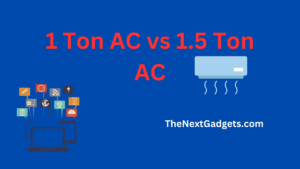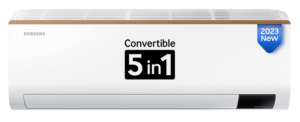If you’re in the market for a new 4K TV in 2025, chances are you’ve stumbled upon three hot contenders: the Sony Bravia 3, Samsung QN70F (Neo QLED), and LG QNED 8X (Mini-LED) i.e. Bravia 3 vs Samsung QN70F vs LG QNED 8X
All three bring premium features, advanced processing, and big-brand reliability — but they approach picture quality, smart features, and pricing very differently.
In this in-depth comparison, we’ll break down each TV’s panel technology, backlight system, processing engine, sizes, expected pricing in India, and unique advantages — and finally crown a winner based on real-world usage.
Table of Contents

1) Panel type & backlight / lighting (how each makes the picture)
Sony Bravia 3
- Uses an LED/LCD panel with direct LED backlight (Sony’s 2024 Bravia 3 is an LED model in Sony’s entry/mainstream range). That means standard zone/backlight control (not mini-LED) and a 60Hz panel in many SKUs. It emphasizes clean color processing and accurate upscaling rather than extreme peak brightness. Good for normal living rooms and movie watching where color fidelity matters.
Samsung QN70F (Neo QLED)
- Neo QLED + Mini-LED backlight: Samsung’s QN70F uses Mini-LED local dimming (many small LED zones) and Quantum Dot color tech. That produces higher peak brightness and stronger HDR highlights compared with standard edge/direct LED TVs. Also benefits from Samsung’s Quantum Matrix / Vision AI processing that manages local dimming and tone mapping for HDR. Great for bright rooms and HDR content.
LG QNED 8X (QNED Mini-LED family)
- LG’s QNED 8X is part of LG’s Mini-LED (QNED) lineup — a dense local-dimming Mini-LED backlight combined with quantum + nano cell layers (QNED). LG pairs this with its α-series AI processors (α8/α9 variants) for scene analysis, and offers advanced HDR tone mapping, Dolby Vision & Atmos support on many models. Mini-LED here yields deep contrast and much better local dimming control than conventional LED/LCD TVs.
Takeaway on lighting:
- Mini-LED (Samsung & LG) > Direct LED (Sony Bravia 3) for HDR brightness and local dimming. Sony focuses on color science and picture processing; Samsung emphasizes brightness and HDR pop; LG focuses on fine-grain dimming + rich feature set (Dolby Vision/Atmos + AI picture modes).
Bravia 3 vs Samsung QN70F Read more
2) Picture processing, features and gaming
Sony Bravia 3
- Strong upscaler and Sony color tuning; supports standard HDR formats (Dolby Vision on some SKUs) and typically uses Google TV. Not a high-end gaming panel (many SKUs are 60Hz, limited HDMI 2.1 features on entry models). Best for cinematic/streaming viewers who value natural color and Sony’s image processing.
Samsung QN70F
- Equipped with Samsung’s NQ4 AI Gen2 / Vision AI processing (on 2025 models), supports HDMI 2.1 features on certain sizes, higher refresh rate support (some SKUs advertise 144Hz marketing for PC/PC gaming modes), and low-latency Game Mode improvements. Great for HDR gaming and fast sports because of high brightness, strong motion handling and adaptive features. Samsung QN50F
LG QNED 8X
- Uses LG’s α8/α9 AI Processor 4K Gen2 depending on SKU. Offers gamer-friendly specs on many models (low input lag, VRR/ALLM on higher SKUs), plus FILMMAKER MODE™, Dolby Vision & Atmos — making it a strong all-rounder for movies and gaming. Local dimming and tone-mapping are especially good for dark-scene detail. LG Electronics
3) Sizes available (typical lineups / India market)
- Sony Bravia 3 — commonly offered in 43″, 50″, 55″, 65″ (Sony’s page lists 55″ and 65″ listings; 43″ and 50″ often exist in entry ranges). Check local SKUs for exact sizes.
- Samsung QN70F — available in common living-room sizes: 55″, 65″, 75″ and sometimes 50″ / 85″ depending on region. Samsung’s product pages list 55″, 65″, 75″ SKUs.
- LG QNED 8X / 8XA — LG lists 55″, 65″, 75″ (and larger 86″+ in some series) for QNED 8X family. Sizes vary by regional model code (8XA / 8AA etc.).
4) Expected price (Amazon / India — observed ranges in Aug 2025)
Prices fluctuate with offers/seasonal sales. These are observed listing prices from Amazon India and manufacturer sites (rounded):
- Sony Bravia 3 (55″) — ≈ ₹70k–₹80k on Amazon India (example listing ~₹73,990 for the 55″ SKU). Expect lower during big sales.
- Samsung QN70F (55″) — Manufacturer/retailer listings show MSRP ~₹1.12L with typical selling prices around ₹84k–₹95k depending on retailer and offers (some stores show promotional “Joy price” ~₹94,980 for 55″). Expect variation during sales.
- LG QNED 8X (55″) — Amazon India listings for QNED 8AA / 8A/8X family show ≈ ₹66k–₹85k for 55″ depending on exact model and discounts (example: 55″ QNED 8AA around ₹66,990 in recent listing). LG’s India site lists official prices dependent on model code.
Price takeaway: Sony Bravia 3 sits in the midrange; LG QNED 8X can undercut Samsung and sometimes Sony at aggressive promotional prices; Samsung QN70F (mini-LED Neo QLED) tends to be the priciest of the three in comparable sizes, because of mini-LED implementation and Samsung positioning.

5) What each model offers over the others (side-by-side strengths)
Sony Bravia 3 — strengths over others
- Cleaner, natural color tuning and very good upscaling for non-4K sources (Sony’s image processors).
- Google TV integration and Sony’s ecosystem (easy UI + good app support).
- Typically simpler, dependable TV for everyday streaming and movies at a sensible price. Sony Bravia 3
Samsung QN70F — strengths over others
- Mini-LED local dimming with higher peak brightness — better HDR “pop” and highlights in bright rooms.
- Samsung’s Vision AI processing for dynamic scene optimization and potentially better motion handling / gaming pedigree on specific SKUs.
- Strong Tizen ecosystem and Smart TV features (and oft-advertised higher refresh / PC modes on certain sizes).
LG QNED 8X — strengths over others
- Strong local dimming + α-series processing — closer to “near-OLED” contrast in well-implemented Mini-LED variants.
- Broad multimedia support (Dolby Vision + Atmos on many SKUs), FILMMAKER MODE, plus LG webOS features and strong gaming features on higher SKUs.
- Often better value in the Mini-LED segment when discounted.
6) Real-world viewing scenarios — which to choose
- Bright living room (lots of daylight / big windows) → Samsung QN70F for peak brightness & HDR highlights.
- Movie nights in a dim room (deep blacks, cinematic contrast) → LG QNED 8X (best local dimming control among the three, closer to OLED contrast in many scenes).
- Streaming, everyday TV, ease of use, color accuracy → Sony Bravia 3 (balanced picture, good color science, simple Google TV).
- Gaming (if you want high refresh & low lag) → Samsung or LG depending on exact SKU — check for HDMI 2.1, VRR and input lag on the exact size you plan to buy. Samsung markets high refresh/PC features on QN70F; LG’s QNEDs are also gamer-friendly on higher SKUs.
7) Practical buying checklist (things to verify before purchase)
- Exact model code — small letters (8XA / 8AA / QA55QN70F / K-55S30 etc.) determine processor, HDR support & HDMI features. Manufacturer pages list exact SKUs.
- Backlight type for the exact SKU — mini-LED vs direct LED matters for HDR/local dimming.
- HDMI ports and bandwidth (do you need full HDMI 2.1 for PS5/Series X @4K120?). Entry SKUs may lack full HDMI 2.1.
- Smart OS preference — Google TV (Sony), Tizen (Samsung), webOS (LG). Each has slightly different app support and UI.
- Check local reviews & lab tests (RTINGS, expert reviews) for brightness, local dimming, input lag and uniformity on the specific size.
8) Final verdict — the winner?
There is no single absolute winner — it depends on priorities:
- Best for HDR brightness & visible “pop” in bright rooms: Samsung QN70F (Neo QLED + Mini-LED). If you watch daytime sports, bright HDR content, or you value maximum HDR highlights, this is the pick. Samsung
- Best for deep contrast/local dimming & cinematic control (dark rooms): LG QNED 8X — its Mini-LED implementation + α-series processor makes it the strongest for contrast and feature set (Dolby Vision + Atmos). LG Electronics
- Best for color accuracy, simple streaming and value in daily use: Sony Bravia 3 — excellent processor tuning for regular viewers who prefer natural color and Google TV simplicity. Sony ElectronicsRTINGS.com
If you force a single winner for a typical Indian living room (mixed use: movies, sports, occasional gaming) — I’d recommend the LG QNED 8X because it balances strong local dimming, Dolby support and good processor power at competitive prices. But if your room is extremely bright and you want maximum HDR pop, choose Samsung QN70F. If you want the most straightforward, color-accurate streaming experience on a budget, choose Sony Bravia 3.
Bravia 3 vs Samsung QN70F vs LG QNED 8X
Panel Technology & Backlight Systems
Sony Bravia 3
- Type: LED/LCD with Direct LED Backlight
- Strength: Natural color reproduction, clean image processing, accurate upscaling.
- Limitations: Lacks Mini-LED; peak brightness and local dimming not as strong as Samsung or LG’s Mini-LED models.
Sony focuses on delivering a cinematic image through its renowned color science rather than brute-force brightness.
Samsung QN70F (Neo QLED)
- Type: Quantum Dot LCD with Mini-LED Backlight
- Strength: Extremely high peak brightness, better HDR pop, excellent local dimming.
- Extras: Samsung’s Quantum Matrix Tech + Vision AI processor ensures precise zone control and HDR tone mapping.
Perfect for bright rooms where you want HDR to really shine.
LG QNED 8X (Mini-LED)
- Type: Quantum NanoCell + Mini-LED Backlight (QNED Technology)
- Strength: Superb contrast and deep blacks, thanks to fine-grained local dimming zones.
- Extras: α8/α9 AI Processor 4K for adaptive picture tuning, Dolby Vision & Dolby Atmos support, FILMMAKER MODE™.
A strong choice for movie lovers who want cinema-quality contrast without jumping to OLED.
Processing & Smart Features
Sony Bravia 3 — Google TV interface with smooth navigation, Chromecast built-in, and solid app support. Excellent for streaming services and casual viewing.
Samsung QN70F — Tizen OS with a polished UI, rich app store, and gaming-centric features like low latency, VRR, and (on certain SKUs) 144Hz support for PC/console.
LG QNED 8X — webOS platform with Magic Remote, Game Optimizer, Dolby Vision Gaming (on higher SKUs), and versatile content discovery.
Sizes Available in India: Bravia 3 vs Samsung QN70F vs LG QNED 8X
- Sony Bravia 3: 43″, 50″, 55″, 65″
- Samsung QN70F: 55″, 65″, 75″, 85″
- LG QNED 8X: 55″, 65″, 75″, 86″+ (varies by SKU)
Expected Prices (Amazon India – Aug 2025)
- Sony Bravia 3 (55″) – ₹70,000–₹80,000 (seen at ₹73,990 during offers)
- Samsung QN70F (55″) – ₹84,000–₹95,000 (MRP ~₹1.12 lakh)
- LG QNED 8X (55″) – ₹66,000–₹85,000 depending on model code and sale discounts
What Each Model Does Better
Sony Bravia 3
- Natural, cinematic colors
- Outstanding upscaling for non-4K content
- Google TV simplicity
Samsung QN70F
- Best HDR brightness & highlight detail
- Superior in bright rooms
- Gaming-friendly refresh rates & latency
LG QNED 8X
- Excellent local dimming contrast
- Full Dolby Vision + Atmos support
- Strong value in the Mini-LED segment
Which One Should You Buy?
For bright living rooms & HDR pop: Go for Samsung QN70F — it’s the king of peak brightness.
For movie nights & deep contrast: Choose LG QNED 8X — Mini-LED + Dolby Vision makes it perfect for cinematic viewing.
For everyday streaming & accuracy: Pick Sony Bravia 3 — easy to use, color-accurate, and value-packed.
Final Verdict
If we had to choose one overall winner for most Indian homes, it would be the LG QNED 8X.
It strikes the right balance between brightness, contrast, Dolby features, and price — making it a versatile TV for both day and night viewing.
Runner-up: Samsung QN70F for bright-room HDR lovers.
Honorable mention: Sony Bravia 3 for those who want a plug-and-play, color-accurate Google TV.
💡 Pro Tip: Always check the exact SKU (model code) before buying — even within the same series, backlight type, processor version, and HDMI port specs can vary.
Bravia 3 vs Samsung QN70F vs LG QNED 8X – Detailed Comparison Table
| Feature | Sony Bravia 3 | Samsung QN70F (Neo QLED) | LG QNED 8X (Mini-LED) |
|---|---|---|---|
| Panel Type | LED/LCD | Quantum Dot LCD | Quantum NanoCell LCD |
| Backlight Technology | Direct LED | Mini-LED (Neo QLED) | Mini-LED (QNED) |
| Processor | Sony Picture Processor X-Reality PRO / Cognitive Processor XR (varies by size) | NQ4 AI Gen2 / Vision AI | α8 or α9 AI Processor 4K |
| Refresh Rate | 60Hz (some sizes) | 120Hz (up to 144Hz on PC mode in select SKUs) | 120Hz |
| HDR Formats Supported | HDR10, HLG, Dolby Vision (select SKUs) | HDR10+, HLG | HDR10, HLG, Dolby Vision |
| Local Dimming | Basic (limited zones) | Advanced (Mini-LED with Quantum Matrix) | Advanced (Mini-LED with Precision Dimming Pro) |
| Smart OS | Google TV | Tizen OS | webOS |
| Audio Features | Dolby Audio, DTS, 20W–30W output | Dolby Digital+, Adaptive Sound+, OTS Lite (Object Tracking Sound) | Dolby Atmos, AI Sound Pro |
| Gaming Features | ALLM (Auto Low Latency Mode) | ALLM, VRR, Game Motion Plus, up to 144Hz PC gaming (select SKUs) | ALLM, VRR, Game Optimizer, Dolby Vision Gaming |
| Sizes in India | 43″, 50″, 55″, 65″ | 55″, 65″, 75″, 85″ | 55″, 65″, 75″, 86″+ |
| Brightness (Peak) | ~450–550 nits | ~1,000–1,500 nits | ~1,000–1,200 nits |
| Expected Price (55″) | ₹70k–₹80k | ₹84k–₹95k | ₹66k–₹85k |
| Best For | Natural color accuracy & streaming | Bright rooms & HDR highlights | Deep contrast & Dolby Vision movies |
Read more at thenextgadgets.com



